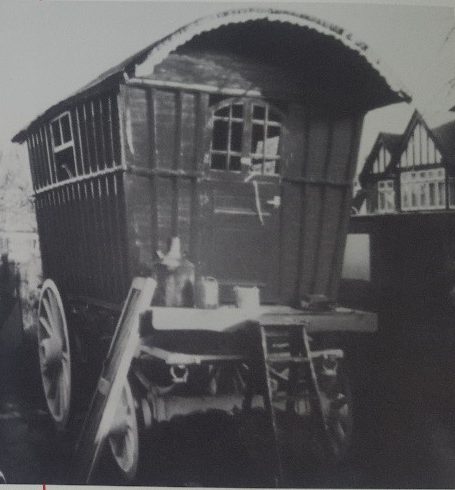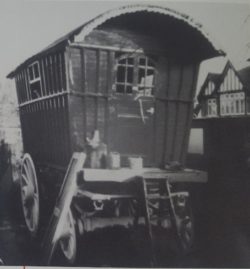When memories live in things: the story of a lost caravan

The case of Suzie Lee and her family
Laura King, University of Leeds
The objects we own and keep can play a really significant role in helping us remember and keep with us loved ones who have died. But what if you were constantly on the move? For Gypsy and Traveller families early in the twentieth century, almost everything they owned had to be portable, within the wagons they lived in. Since the 1950s, more and more Gypsies and Travellers live in static housing, though often not out of choice. How does this affect people’s relationship with things – and places too?
From the autobiographies of Gypsy and Traveller people I’ve read, stopping places could very viscerally bring to mind family and friends who had died – because these were places that person loved or spent a lot of time. Whilst we might think that travelling a lot meant places were less significant to remembering, for many Gypsies and Travellers they were and are really important as a way of remembering the dead. And objects too could have a very important place in remembering in day-to-day life. Amongst some Gypsy and Traveller groups, there has been a ritual of burning the belongings of someone who has died. But we shouldn’t assume this always happened – families have different ways of reacting to someone’s death. And so we turn to the story of Suzie Lee and her dad.
Suzie is the author of an autobiography about Travelling life, entitled One in a Million, published in 1999. Suzie, a Traveller, was seven years old in 1945 when her dad died. Suzie’s mum burnt two vans but Suzie explained that she didn’t burn their bigger wagon as they had no money to buy another. In 1953, the family sold the wagon. Suzie explained that at that point:
Mum wanted to burn the old wagon but us children couldn’t bear to have it burnt. It was the only thing of Dad’s left.
It was one of the saddest days even for my oldest brothers.
It was like something was taken out of our lives… We all cried.
Mum made an agreement with the gauga [non-Traveller] that when the wagon rotted he would burn it.
Suzie found the wagon comforting when she saw it around, and took her children to see it. Her and her siblings decided they wanted to get it back. But the man they had sold it to had since died, and his son had passed it on. They kept searching for the old wagon, until:
I was going to the vet’s for medicine for the horses.
We’ve always had horses, even with our motors.
I just went down a back lane by chance to turn the truck round and saw the top of an old wagon. I just knew it was Mum and Dad’s!
For twenty-nine years we tried to buy her back.
At the last the gauga agreed to sell.
The wagon’s been in our hands now since 1996. We paid £7000 for her.
All my brothers came across to look at her. They cried over the stove.
This wagon, for Suzie and her family, represented her parents and their memory. Even after – or because of – being parted from it for decades, this particular wagon was irreplaceable and they searched and haggled for years to get it back into the family as a tribute to her mum and dad. For anyone, a particular object can become very important and indeed irreplaceable in terms of its value in remembering someone who died. But perhaps there is something about moving from place to place that intensifies the significance of particular objects. Lots of factors can influence people’s relationship with their stuff, and the things they own because they remind them of someone they’ve lost. But for those on the move, the meaning of objects can be felt all the more intensely.

Autobiography referred to: Suzie Lee/Essex County Council Learning Services, One in a Million: A story of hardship, endurance and triumph in a Traveller family (Essex County Council Learning Services, Chelmsford, 1999)
Many thanks to Leeds Gypsy and Traveller Exchange (GATE) for their help in finding archival materials relating to Gypsies and Travellers, such as Suzie’s autobiography. Find out more on their website or via Twitter.
